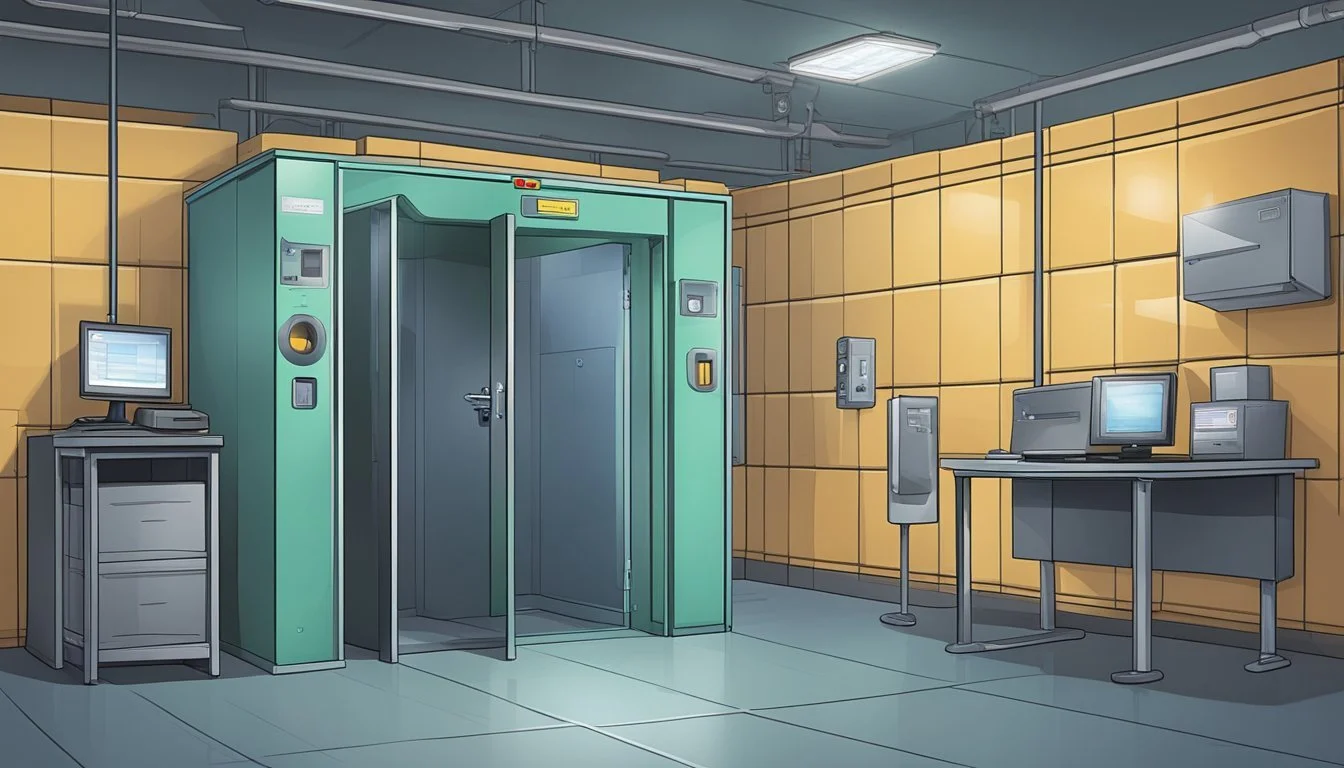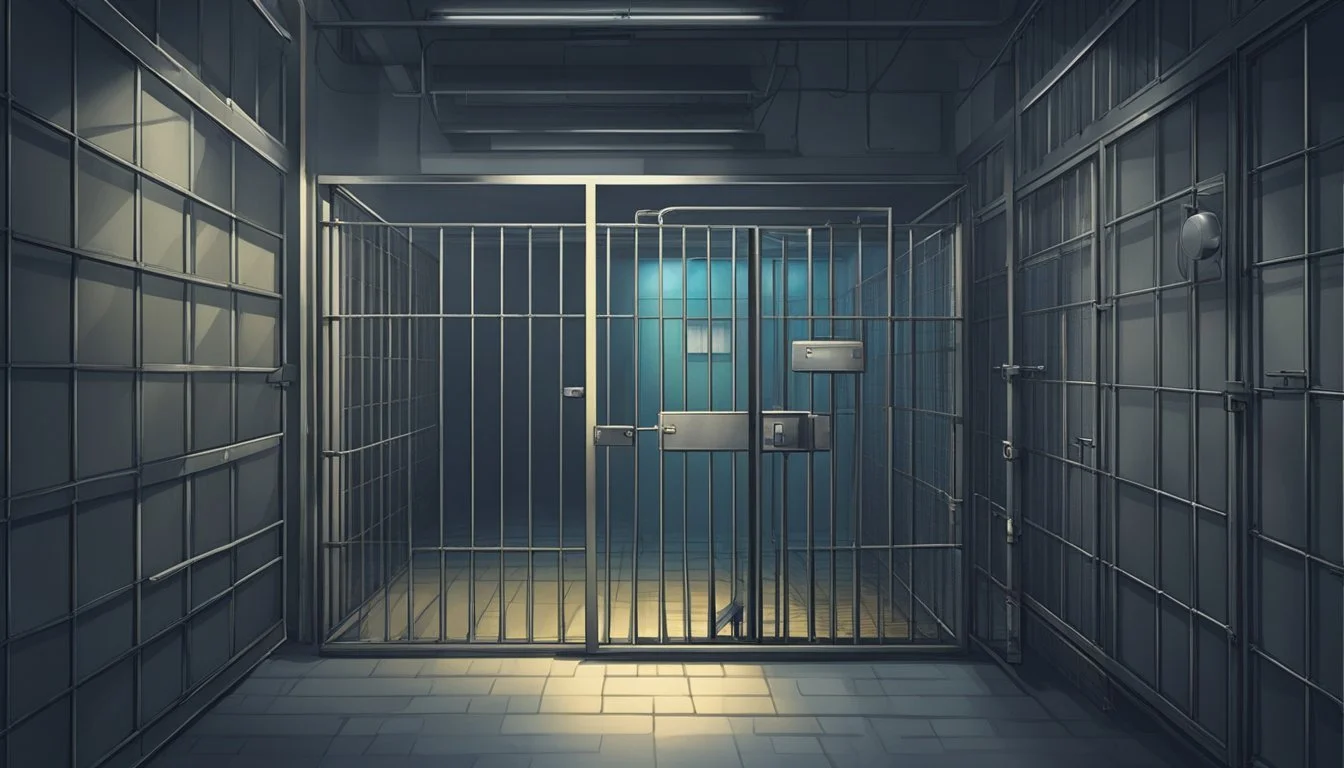Phillip Carl Jablonski: 5 Death Row Security Measures
Tightening Prison Protocols After Serial Killer's Rampage
Phillip Carl Jablonski was a notorious American serial killer who murdered five women in California and Utah between 1978 and 1991. His horrific crimes and subsequent incarceration on death row at San Quentin State Prison drew attention to security protocols in maximum-security facilities.
Jablonski's case prompted a review of death row security measures, leading to significant changes in how high-risk inmates are managed. These enhanced procedures aim to prevent further criminal activity by condemned prisoners and ensure the safety of corrections staff and other inmates. The improvements implemented in the wake of Jablonski's crimes continue to shape prison security practices today.
1) Maximum Security Cells
After Phillip Carl Jablonski's crimes, death row facilities implemented enhanced maximum security cells. These cells feature reinforced walls, floors, and ceilings to prevent escape attempts.
Steel doors with multiple locking mechanisms replaced older models, increasing inmate containment. High-strength, shatter-resistant windows were installed to maintain visual observation while ensuring inmate safety.
Cell furnishings were minimized and secured to prevent their use as weapons. Toilets and sinks are now made of stainless steel, reducing opportunities for damage or concealment.
Lighting fixtures are tamper-resistant and recessed into the ceiling. Ventilation systems were redesigned to prevent prisoner access and potential escapes through air ducts.
24/7 video surveillance was introduced in each cell, allowing continuous monitoring of inmate activities. Two-way intercoms enable communication between staff and prisoners without direct contact.
These measures significantly improved security on death row, reducing the risk of escapes and violent incidents. The enhanced cells provide a safer environment for both inmates and correctional officers.
2) 24/7 Surveillance
Following Phillip Carl Jablonski's crimes, California's death row implemented enhanced 24/7 surveillance measures. High-definition cameras were installed throughout the facility, covering cells, common areas, and outdoor spaces.
Guards now monitor live video feeds around the clock from a centralized control room. This allows for immediate detection of any suspicious activity or potential security breaches.
Motion sensors and alarm systems supplement the camera network, triggering alerts if inmates attempt to access restricted areas. Biometric scanners at key checkpoints verify inmate and staff identities.
Audio monitoring systems were also added to detect verbal threats or plans for escape attempts. All phone calls and visits are now recorded and analyzed for security purposes.
These comprehensive surveillance measures aim to prevent future incidents and maintain strict control over death row inmates. The constant monitoring helps ensure the safety of staff, visitors, and other prisoners.
3) Controlled Movement Protocols
After Phillip Carl Jablonski's crimes, California's death row implemented stricter controlled movement protocols. These measures aim to limit inmate interactions and prevent potential violent incidents.
Death row inmates now move in small, closely supervised groups. Guards escort prisoners individually or in pairs when traveling to exercise yards, visitation areas, or medical facilities.
Electronic tracking systems monitor inmate locations at all times. This technology allows staff to quickly identify any unauthorized movement within the facility.
Strict schedules govern when inmates can leave their cells. These timetables reduce opportunities for unplanned encounters between prisoners.
Staff conduct frequent headcounts and cell inspections to ensure inmates are where they should be. Any discrepancies trigger immediate lockdown procedures.
Improved communication systems allow guards to relay information about inmate movements rapidly. This coordination helps maintain a secure environment throughout the prison.
4) Limited Visitation Rights
Death row inmates face significant restrictions on their visitation rights. These limitations aim to enhance security and control within the prison environment.
Inmates are typically allowed a limited number of visits per month. These visits are often restricted to immediate family members or approved individuals only.
Visitation takes place in secure, monitored areas. Physical contact between inmates and visitors is generally prohibited, with interactions occurring through glass partitions or via video conferencing systems.
Visitors must undergo thorough security screenings before entering the facility. This includes metal detectors, pat-downs, and bag searches to prevent contraband from entering the prison.
The duration of visits is strictly controlled. Most facilities allow visits lasting between one to two hours, depending on the institution's policies and security level.
Inmates may be denied visitation privileges as a disciplinary measure. This serves as a deterrent for rule violations and helps maintain order within the prison population.
5) Enhanced Contraband Detection
Phillip Carl Jablonski's crimes highlighted the need for improved contraband detection in prisons. Correctional facilities implemented more rigorous screening procedures to prevent dangerous items from entering.
Advanced metal detectors and X-ray machines were installed at entry points. These technologies could detect smaller and more concealed objects than previous systems.
Body scanners became standard in many prisons, allowing staff to check for hidden items without invasive searches. This technology improved efficiency and reduced confrontations during inspections.
Trained detection dogs were deployed more frequently to sniff out drugs, weapons, and other prohibited items. Canine units conducted regular sweeps of cells, common areas, and visitor spaces.
Prison staff received additional training on recognizing potential contraband and concealment methods. This increased awareness helped catch more attempts to smuggle in illicit items.
Digital mail scanning systems were introduced to prevent drugs and other substances from entering through correspondence. Physical mail was converted to digital format, eliminating a common smuggling route.
These enhanced detection measures significantly reduced the flow of dangerous contraband into correctional facilities. The improved security helped protect inmates and staff while limiting criminal activities within prison walls.
Background of Phillip Carl Jablonski
Phillip Carl Jablonski was an American serial killer convicted of murdering five women between 1978 and 1991. His criminal history began early in life and escalated to violent crimes against women, culminating in multiple murders across California and Utah.
Early Life and Criminal History
Phillip Carl Jablonski was born on January 3, 1946. His early life was marked by troubled behavior and run-ins with the law. As a young adult, Jablonski joined the military but was discharged due to his erratic conduct.
In the 1970s, Jablonski's criminal activities intensified. He committed various offenses, including assault and attempted murder. These early crimes demonstrated a pattern of violence against women that would escalate in the following years.
Jablonski's mental state was a subject of concern throughout his criminal career. He reportedly suffered from mental health issues, which may have contributed to his violent tendencies.
Crimes Committed and Trial Proceedings
Jablonski's killing spree began in 1978 with the murder of his first wife. He was convicted and imprisoned for this crime but was later released on parole. Upon release, Jablonski resumed his violent acts, murdering four more women between 1991 and 1991.
His victims included:
Fathyma Vann (1991)
Carol Spadoni (1991)
Eva Peterson (1991)
Two additional women in California and Utah
Jablonski was apprehended on April 28, 1991. His trial resulted in a conviction for the murders, and he was sentenced to death. Jablonski spent the remainder of his life on death row at San Quentin State Prison.
In 2006, Jablonski appealed his conviction, but the California Supreme Court upheld his death sentence. On December 27, 2019, at the age of 73, Jablonski was found unresponsive in his cell and pronounced dead shortly after.
Enhanced Death Row Security Measures Post-Crimes
Jablonski's crimes prompted significant changes to death row security protocols. These measures aimed to prevent similar incidents and improve overall safety for inmates and staff.
Increased Surveillance and Monitoring
Authorities implemented 24/7 video surveillance in all death row cells and common areas. High-resolution cameras with night vision capabilities were installed to monitor inmate activities continuously.
Guards began conducting more frequent cell checks, increasing from every 30 minutes to every 15 minutes. This reduced opportunities for inmates to engage in suspicious behavior undetected.
Advanced motion sensors were placed in cells to alert staff of unusual movements, especially during nighttime hours. These sensors helped detect potential suicide attempts or other emergencies quickly.
Stringent Background Checks for Correctional Officers
Hiring processes for death row correctional officers became more rigorous. Extensive psychological evaluations were introduced to assess candidates' mental stability and suitability for high-stress environments.
Criminal background checks were expanded to include more comprehensive searches of state and federal databases. This helped identify any past misconduct or associations that could compromise security.
Periodic re-screening of existing staff members was implemented. Officers underwent annual background checks and psychological assessments to ensure ongoing fitness for duty.
Training programs for death row officers were enhanced, focusing on recognizing and responding to potential security threats. This included courses on inmate manipulation tactics and contraband detection.








